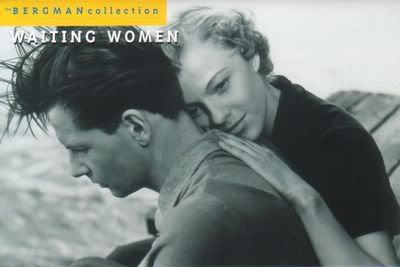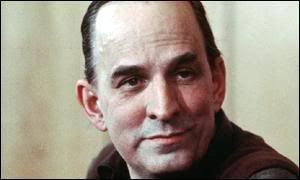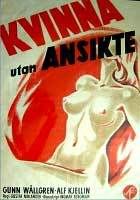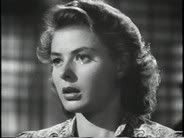How an Ingmar Bergman film currently engages me in the writing of stories.
 A film that taught me so much on how to construct an otherwise,complicated story.
A film that taught me so much on how to construct an otherwise,complicated story.
Ingmar Bergman as an 85-year old recluse in a rare television interview.

Bergman in his younger days, celebrating a stardom that saw him grab 3 Oscars for the Best Foreign Film award.

Bergman Poster.


Ingrid Bergman & Bibi Anderson who starred as lesbian lovers in the world-famous Persona (1966) and

norwegian actress Liv Ullmann were Bergman's favourite choice of actresses everytime.

A classic Bergman poster that tries its best to capture multi-faceted emotions.
It begged a serious contemplation once I realised that a Bergman film industriously educated me in the writing craft.
Perhaps anyway; for the tear-jerkers shot decades ago in Sweden, but which I have watched over the last year with religious repetition.
I still remember each screenplay for its brilliance that provoked a lingering sensory foreplay with regards to a skilled body movement and unpredictable speech. And emotions wound from heartstrings, and all nicely strummed and torn from maligned affairs of the heart that stay classic for all time.
Such especially would be the case as with Waiting Women, Autumn Sonata, Wild Strawberries, Persona and others where images still offer seductive shadowy apparitions but whose elegant titles like an old dusty gown I soon forget.
Famed actresses known for their twinned accomplishments combining a bewitching beauty and bookish brains; those like Ingrid Bergman, Liv Ullmann and Bibi Andersson engrossed in sensitive playful roles and yet at that very unsuspecting moment, suggesting deep wretched scenes of reflection, confessions, accusations and even the ocassional violent slap across the face routine - at some point the screenplay demands it - all swing with grace from an emotional tightrope banking on sadness and pain to gripping conclusions that range from happily-ever-after butterfly kisses or maybe-never-again fullstops.
Such prospects stay for me, one of the most wonderful and immediate masters of a literary science; this free accomplished study like a series of valuable masterclasses on the flawless use of flashbacks, exposition scenes, the melting of one character into another and how an old one would rise again in a perfectly natural way from nowhere where a new one suddenly fades into oblivion.
All these to suggest the miraculous success of cliffhanger after cliffhanger.
Daughters watch over a dying sister, another bent on the infliction of emotional torture confronts her famous, runaway mother who later, cleverly, famously and thankfully runs away again in the dead of the night, a dead sister playacts a terrifying ghost, spinsterish housekeepers whose pasts are so macarbe, they may hide a museum of skeletons each in their cluttered closets, a cold-hearted father now wretched and misreable longing for a lost son, and perhaps as a last of many other examples; sisters who clouded in a stirring storm of love and hate for the other, end up almost becoming incestuous when lust suddenly joins hands with revenge.
Yes, Bergman could play up envious sibling rivalry like no one I've known - perhaps that's why in later years, he would confess to a shocking knowledge that watching his own films made him depressed.
But not so me as his films make terrific chapters for the intent study of the
use of profound emotions in conversations. After all, depression is not a word I've been familiar with for a long time, as it's not my nature to stay sad for more than a few hours - there is no reason to - and in any case, clever, beautiful films bring me great joy as an alternative substitute.
Can you now hear the snatch of script from a soft serenade in Waiting Women...
"Open the door, only a little..
...Martha is a free tree,
she is a glistening little fish,
why are your eyes so sad, my Martha?
Your sweetheart is sitting outside your door.
Eternal is my love for you...
so open the door, only a little..."
And all the while it shows a close-up of Martha's wonderment; the slow deliberate filling of her eyes with tears, the half-opened movement of her lips as if to kiss someone while a guitar strums, the coy turn of the head to mark a growing curiosity as she hears the creaking of the door, the footsteps of hesitation - one sharp high-heeled footstep closing in on the other - and finally Martha's smile that takes its time to break open like a flooded dam.
Each story is moulded from a timely pace that at first, slowly trickles like a forgotten tap announcing leaky drops of water and a hint of angst before spiralling up to a stormy ocean of ferociousness. So deafening is the climax that builds from one small conflict to another small conflict, that at the end of the day, all fit neatly into the other like a perfect jigsaw puzzle.
As a viewer, Bergman may even challenge you to choke from such a climax of revolving pain...the fantasy of a never-ending orgasm now naughtily comes to mind as a paraphrase.
What is especially wonderful is that entire dramatic scenes comprising various moods and tones may take place in just one bare room. Similiar as I would say, to the waiting, blank pages of a book.
So concentration becomes absolutely necessary to face the exciting challenge that bares all for the complete description of a body language and the whimsical sophistication of speech.
How you play out a woman screaming or speaking affably in low intimate tones as she lights a cigarette or pours out a martini determines the degree of how far you could end up as an author, titallating a reader's senses and thoughts. How would she swing her bottom? How sexily would she pose? By saying nothing, your character could be telling the reader everything.
And Bergman reminds me of the all-important subtle details that spring up as flesh for the bone; character substance that helps to fatten up your plot foundation.
Where as a writer wanting to learn practical writing techniques, I found Bergman's execution techniques in Waiting Women (1952) exceptional.
Four sisters-in-law married to four brothers, young and old, but with a domesticity that has stood the test of time and lived to tell the tale, now wait at sundown for their husbands to come home, in a living-room lounge.
Thrilled over this reunion and with hearts aching from a separated love, they are engaged in chatty congenial banter. Each one gripped by a sudden affectionate mood begans a sharing of confidences. Each woman relieves the scandalous history of its making in the wife's meeting of her husband. Some were almost never meant to be.
At the same time, I would say that Hollywood's film version of How To Make An American Quilt (1995) offers a very mild influence whereas Bergman hits a tight noisy pace with different dramatic arrangements from the word 'go'. And that was what stays so inspirational to me. It is a dramatic movement more in keeping merrily with a cha-cha dance as opposed to the slower studied tango.
Four supplementary stories are eagerly captured into one huge tale that embodies the entire theme for the film. But it was a clever reminder hinting on the importance of changing storylines...once again, the mood, pace, tone, subtle conversations and powerful body language hinted at everything of how a story could take its reader or viewer to great heights from nothing but the imagination and using a myriad of emotions.
How even from one story could stem into a 100 little ones. After all, the plots were all different. A single mother with her passionate love for an artist. An older wife who redeems her husbands from his philandering ways when they make love in a stuck lift. A wife who betrays a clandestine affair to her husband and in a panic attack has to industriously stop him shooting himself, before she realises she loves him after.
Nighclubs, artist garrrets, can-can dancers and a hospital's maternity ward.
The rock of the sea, the taste of a drink, the sharp nettled ring of a telephone, the tasty scent of a plucked rose, laughter from an apartment, strange knocks on the door...
I found this lesson truly amazing.
Where there was sadness, there would suddenly stem gaiety. Where there lay poignancy, this face of the film would suddenly switch into suspense. A tear would buckle up into a muffled sob and then a remembered smile. As a viewer, you would be kept on the edge of your seats, not knowing what would happen next. Even romance became blanketed by the strong dark hands of mystery.
Yet, Bergman was not afraid of exposition scenes; of switching back and forth like a flickering lightbulb. And to be at home with this kind of technique, even as an author hints of great possibilities. Here was a man who would turn memories into ghosts and ghosts into real people.
The flight of imagination soared superbly when winged from a foundation grounded on reality.
Bergman could also employ mellow scenic views of lonely manors, vast landscapes and dark brooding lakes to straightaway paint any different kind of a a forlorn mood. He didn't always need a face to tell a story.
Oh..I love a challenge and learning from a master storyteller is everything.
Labels: Ingmar Bergman


<< Home